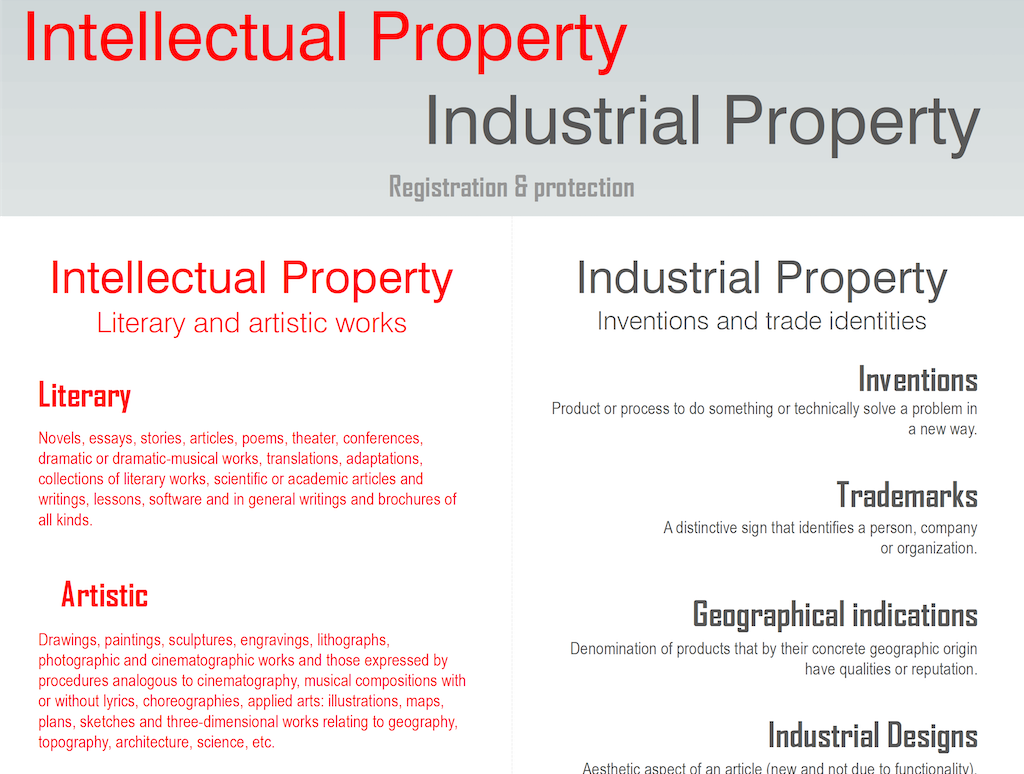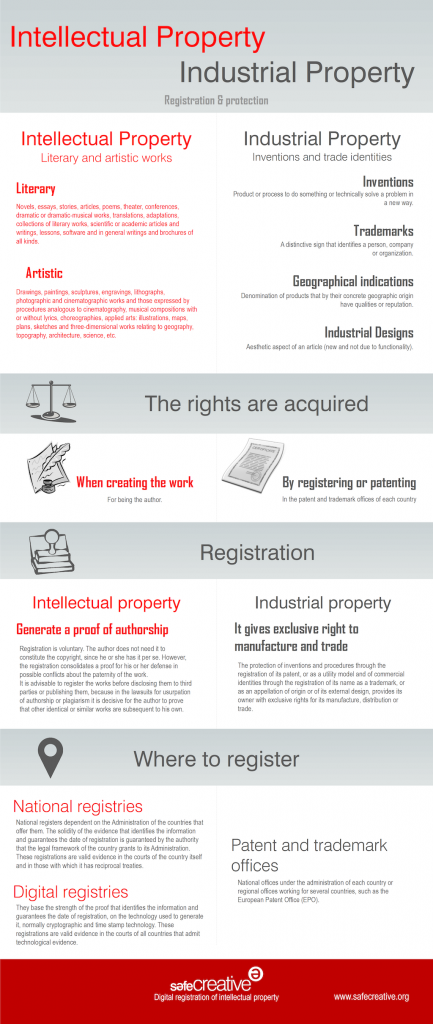
Intellectual Property vs Industrial Property
By Intellectual Property we refer to the set of legal regulations that aim to protect the fruits of human creativity and ingenuity.
On the basis of these principles, national laws attribute to creators and inventors the exclusive enjoyment of the exploitation of their creations and inventions. The law guarantees these creators certain legal instruments designed to protect them from possible abuses.
The term “intellectual property” seems to date back more than a century and a half.
The concept of “intellectual property” indicates a system of legal protection of intangible assets that have acquired an increasing economic weight. The result of human creative and inventive activity such as: artistic and literary works, patents and industrial inventions and utility models, industrial design, trademarks and logos.
Modern intellectual property includes three main areas:
- copyright (protects the fruits of intellectual activity).
- patents (protect ideas and the right to exploit them)
- trademarks (protect the symbols used to distinguish different companies).
Industrial property thus is the a set of rights and rules that govern:
Distinctive signs such as trademarks, geographic indications, appellations of origin, etc.
Technical and design innovations, which refer to inventions, utility models, industrial designs and models.
The diffusion of the English term “intellectual property”, as a general term, in different digital places on the Internet, spread mainly from the eighties onwards. However, we must always bear in mind what we are talking about in each case. As we can see, the copyright of a creative work is not the same as an invention or a trademark.
–


The article lays out the legal distinctions in a clear, balanced way—helping readers appreciate differences they might not have thought through before. It’s thoughtful and informative, not just for creators but for anyone interested in how innovation, ownership, and creativity intersect. I came away with a sharper understanding of how these concepts shape what we value and protect.